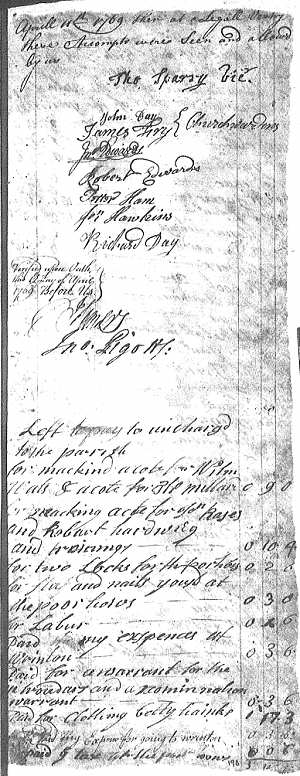
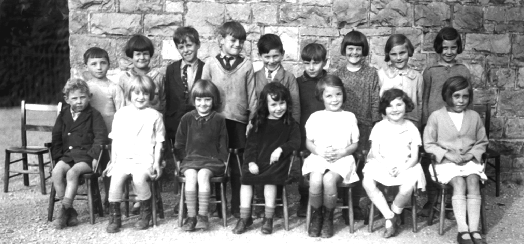
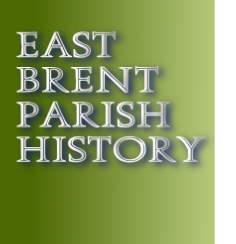
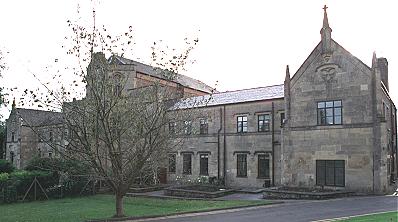
Axbridge, Badgworth, Banwell, Berrow, Biddisham, Blagdon, Bleadon, Brean, East Brent, South Brent, Burnham with Aston Morris, Burrington, Butcombe, Chapel Allerton, Charterhouse, Cheddar, Christon, Churchill, Compton Bishop, Congresbury, Hutton, Kewstoke, Locking, Loxton, Lympsham, Mark, Nyland with Batcombe, Puxton, Rowberrow, Shipham, Uphill, Weare, Wedmore, Weston-super-Mare, Wick St Lawrence, Winscombe, Worle, Wrington with Broadfield.
Later Additions: Brent Knoll, North Highbridge, South Highbridge (from 1896).
(Note: South Brent at that time, is the area we now call Brent Knoll. Its possible that the name Brent Knoll replaced South Brent in the Union records in 1896. when it came into everyday use? .JR).
The population within the Union of parishes at the 1831 census had been 28,794 with parishes ranging in size from Nyland with Batcombe (population 52) to Wedmore (3,557).
~~~~~~~~~~~~~~~~~~~~~~~~~~~~~~~~~~~~~~~~~~~~~~~~#
A number of poor East Brent individuals and families were forced to enter the Axbridge workhouse.
(You can find a list of these here in a PDF file or MSword)
I am indebted to Pat Hase of the WSM Family History Society for her help.
Before the welfare state as we know it. The poor of the parish no matter what the circumstance, had a very harsh existence. And in some places to this day, being poor or needy sometimes carries the stigma of the situation being the person’s own fault. Previous to the reign of Elizabeth 1st the poor and needy would have had to beg or rely on the charity of their friends and neighbours for survival.
There could be any number of reasons that could lead to a person or family being reliant on the charity of the parish, and possibly end up on relief or in the local Workhouse. Often brought about by events over which they had no control, such as being physically or mentally unable to work. Or the older generations who had become infirm or senile etc and were unable to care or provide for themselves. There are also many instances of individuals recorded in workhouse and pauper records as being blind, lunatic or idiot etc.
In a rural area such as ours where agriculture was the main occupation, work would have been very low paid and seasonal. A bad crop year or an epidemic would be devastating to the livelihood of farmer and worker alike. Many Ag. Lab’s and indeed farmers have been forced onto charity relief or the workhouse.
Until the coming of the railways in the mid 1800's, Which brought other work possibilities to our region and also a means of being able to travel and migrate to work in other industries etc. Most males in our area would have been employed on the land.
Most of the girls would have become domestic servants or similar, working in the households of local farms, estates, landowners and businesses etc.
Many of these young and not so young girls might become unmarried mothers which was a serious offence against the one sided moral code of the times and was regarded as bringing shame onto the family. (It was not unknown for a member of the local gentry, squire or even a vicar to father children by their housekeeper)! This would quite often mean the poor girl or woman was banished from her family and sent away to where she was not known and could perhaps pretend to be a widow. Or she could easily be turned out into the street and possibly end up in the workhouse. Many single women and girls are recorded giving birth in the workhouse.
The Axbridge Union workhouse was erected in 1837 at the south side of West Street in Axbridge. The Poor Law Commissioners authorised an expenditure of £4,496.17s.6d on construction of the building which was intended to accommodate 250 inmates. It was designed by Samuel T Welch who was also the architect of workhouses at Wells and Clifton. The workhouse became officially known as Axbridge Poor Law Institution.
Initially, workhouse medical facilities were often minimal and were sometimes under the charge of a local doctor,
The majority of inmates were undernourished or infirm etc. so gradually hospital and isolation wards were added. Later these facilities were made available to the general public and became the local Hospitals and Infirmaries for the area.
A separate Infirmary block was added to the Axbridge Workhouse in 1903. The workhouse was in use until the 1930's The workhouse buildings later became St Johns Hospital. The Hospital closed in 1993 and has now been converted for residential use.
A number of poorer East Brent individuals and families were forced to enter the Axbridge workhouse.
In 1602 an attempt to stop much of the begging and indeed robbery by people on the streets saw the Elizabethan Poor Law introduced. This at least went some way to providing some means of survival for the poor and needy.
It decreed that each parish would be responsible for the welfare of its own parishioners.
To be paid for by voluntary contributions or from rates raised from landowners and
tenants of property worth more than £10.00 per annum.
~~~~~~~~~~~~~~~~~~~~~~~~~~~~~~~~~~~~~~~~~~~~~~~~~~~~~~~~~~~~~~~~~~~~
The following is extracted from the Charity Commissioners Reports (1819-1837) Held at Somerset Records Office.
“Parish of East Brent”
Mr. Piggott’s Gift.
Upon the table of benefactions in the church of the parish, is the following statement; viz.
Mr. Piggott by his last will and testament, gave 10L to the second poor of this parish,
in the year of our Lord 1655, the interest thereof to be given in money, by the church
wardens and overseers, on Easter. day, for ever” ‘This 10L. has never been invested,
but appears to have been received by the Overseers of the poor, and applied to the
purposes of the parish, leaving the rates chargeable with the interest: the sum
of 1Osh. is accordingly raised in the regular assessments for the relief of the
poor, and given every year by the parish officers in bread to the poor, on or about
Easter-day.
GIFTS OF WILLIAM BAWDEN, JOHN CHAPPELL, and JOEL KESZARD.
On the benefaction tables in this church are also the following statements :—
Mr. William Bawden gave 5L to the second poor of this parish, in the year 1708, the interest thereof to be given in money, by the churchwardens and overseers, on Easter day, forever.
“Mr. John Chappell gave 6L to the second poor of this parish, in the year 1724’, the interest thereof to be given in money, by- the churchwardens. and overseers, on Christmas-day, for ever.
Mr. Joel Keszard gave 5L to the second poor of this parish, in the year 1742, the interest thereof to be given in money, by the churchwardens and overseers, on Easter day, for ever.”
The three several gifts Last mentioned appear also to have been received and applied
to the uses of’ the parish. The sum of l6s. as the interest of them, is raised out
of the parish assessments, and distributed in bread among the poor, in the same manner
as Mr. Piggott’s gift before mentioned.
JACOB DEAN’s GIFT,
Upon the same Benefaction tables in this church is also the following inscription
Jacob Dean, gentleman, by his last will, gave to the churchwardens and overseers of’ this parish, in, the year of 1803 the sum of 20L the interest thereof to be distributed on the day after Christmas Day, between 20 poor men who do not receive weekly pay or relief’ therefrom.’’
This sum has also been appropriated to parish purposes, and the interest is raised out of’ the parish rates.
Twenty shillings are annually paid by the parish officers to ‘20 poor men. who do
not receive parish relief.
ROBERT IVYLEAF’S GIFT.
Upon the same benefaction table it is also stated, that “ Mr. Robert Ivyleaf gave 5L. to the second poor of the parish, the interest thereof to he paid out of his estate near Rooksbridge, to be laid out in bread, and given on Christmas day, for ever 1722
The estate at Rooksbridge is a large farm, in the parish of East Brent, the property of the Ivyleaf family, the tenant (of which pays regularly the sum of 5s to the churchwardens or overseers of this parish, who lay it out in bread, and distribute it among the second poor on Christmas day.
~~~~~~~~~~~~~~~~~~~~~~~~~~~~~~~~~~~~~~~~~~~~~~~~~~~~~~~~~
The 1601 Elizabethan Poor Law divided the poor into two groups
"Would work but couldn't". The impotent poor - the sick, elderly, those unable to work - who were to be helped via outdoor relief or in almshouses.
"Could work but wouldn't". This group were the able-bodied paupers and it was thought that these people were claiming relief because they were lazy. “They were to be severely beaten until they realised the error of their ways”
It relied greatly on the parish itself to administrate, and on unpaid, non-professional administrators. Rural Parishes were small and their finances were feeble so unusually heavy burdens such as a poor crop etc. could be disastrous at parish level.
Overseers, Justices of the Peace, contractors and Vestrymen who operated the relief in urban districts, could be petty bigots. But the Poor Law could be more humane in rural areas because those responsible for the administration of relief at least knew the recipients personally.
Between 1601 and 1834. Application of the old Poor Law was inconsistent, and varied a great deal from area to area.
~~~~~~~~~~~~~~~~~~~~~~~~~~~~~~~~~~~~~~~~~~~~~~~~~~~~~~~~
Between 1601 and 1834. Application of the old Poor Law was inconsistent, and varied a great deal from area to area.
It soon became obvious that some parishes were more sympathetic towards their poor, and this tended to result in paupers moving into that area from less generous parishes. To prevent this, parliament passed the 1662 Settlement Act
 A person had to have a 'settlement' e.g. ‘Belong to a parish’ to obtain relief from
that parish. And was based on the practice of returning paupers to the parish of
their residence or birth.
A person had to have a 'settlement' e.g. ‘Belong to a parish’ to obtain relief from
that parish. And was based on the practice of returning paupers to the parish of
their residence or birth.
Residence of a year and a day was required for a person to qualify for relief.
If a labourer moved away from his parish of origin in search of work the JPs issued him with a ‘Certificate of settlement’ saying that if the man fell on hard times his own parish would receive him back and pay for him to be removed.
. Some of the ways a ‘settlement’ could be secured were:
Birth in the parish.
Marriage (in the case of a woman)
Working in the parish for a year and a day
The Settlement Laws sometimes caused problems because they:
Hindered the free movement of labour
Prevented men from leaving overpopulated parishes in search of work on the 'off-chance' of finding employment
Led to short contracts of, for example, 364 days or 51 weeks. A man might lodge in a parish for 25 years, working on short contracts, and still not be eligible for poor relief later in life.
Relief was given in variety of ways, such as:
Outdoor relief: Where the poor who had somewhere to live and could look after themselves, were given relief in kind, such as food or money towards essentials.
Indoor relief: Where those who were homeless or incapable were given shelter in Alms houses and those forced to go into the village or local workhouse or 'Poor House'.
See note on 1841 census below
~~~~~~~~~~~~~~~~~~~~~~~~~~~~~~~~~~~~~~~~~~~
Where was the East Brent Parish 'Poor House' ?
Before the Axbridge Poor Law Union came into being in 1836, East Brent parish had a ‘Poor House’.
The Churchwardens’ Accounts, 1677-1693, 1737-1775. Shows… The “Lords rent for the Poor House = 1 Shilling” recorded in the overseers accounts 1767 for the East Brent poor.
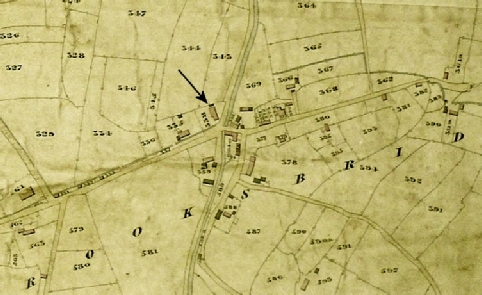
According to the 1840 Tithe apportionments the Poor House was No 338 situated at Rooksbridge on the corner of the Bristol Road (A38) and Rooksbridge Road. At what is now ‘Watersmeet Close’
It was still in use at the time of the 1841 census.
It must have been larger than the average cottage at the time, There were 35 individuals from 10 families listed as residing there?
See a list of parishioners in the East Brent 1841 Poor House Here.
~~~~~~~~~~~~~~~~~~~~~~~~~~~~~~~~~~~~~~~~~~~~~~~~~~
The Joint parish poorhouse.
Thomas Gilbert, an MP, first attempted to have this Act passed in 1765. He finally succeeded in 1782.
The Act allowed groups of parishes to form unions and build joint poor-houses for the totally destitute, in order to share the cost of poor relief through 'poor houses' which were established for looking after only the old, the sick and the infirm. Able-bodied paupers were excluded from these poor-houses: instead, either they were to be provided with
outdoor relief
employment near their own homes
Land-owners, farmers and other employers were to receive allowances from the parish
rates so they could bring wages up to subsistence levels. Gilbert's Act is often
used to demonstrate the government's humanitarianism but it was even more important
in expanding the scope of poor relief and attempting to bring the gentry into closer
involvement in poor relief administration.
By 1796 outdoor relief was given without a workhouse test because it was a period of widespread distress and unrest. Also many paupers were not able-bodied and parishes were not big enough to cope with the problems.
~~~~~~~~~~~~~~~~~~~~~~~~~~~~~~~~~~~~~~~~~~~~~~~~~~~~~~~~~~
In 1723, the Laws relating to the Settlement, Employment and Relief of the Poor, allowed the establishment of workhouses where poor relief would be provided.
This could be done either by an individual parish or by combining of a number of neighbouring parishes, which would share the cost. Between 1723 and 1750, about 600 parish workhouses were established in England and Wales.
The act also introduced the 'workhouse test' - that anyone who applied for relief would have to enter the workhouse where he or she would be obliged to undertake set work in return for relief. The principle was that entering the workhouse should be a deterrent to casual in irresponsible claims on the poor rates. Only the truly desperate would apply to 'the house'.
This principle was continued in the 1834 Poor Law Amendment Act.
By 1776, there were about 2,000 workhouses, each with between 20 and 50 inmates. The cost of indoor relief was high; inefficient and harsh workhouse management led to increased social pressure for more sympathetic treatment of the poor.
However. In 1776, Adam Smith published his Wealth of Nations in which he said that
“The State should not interfere and supply relief, but should let the laws of supply and demand operate freely. This would mean that those who could not work should be allowed to fend for themselves - and starve if necessary - rather than having the State provide any form of relief. Further men would work for any wage rather than starve themselves and their families; lower wages would benefit employers and reduce the price of food”. (Not a nice man)!
~~~~~~~~~~~~~~~~~~~~~~~~~~~~~~~~~~~~~~~~~~~~~~~~~~~~~~~~~~~~~~~~
Report from the Commissioners Inquiring into the Administration and Practical Operation of the Poor Laws, 1834,
“In parishes overburdened with poor we usually find the building called a workhouse occupied by 60 or 80 children (under the care, perhaps, of a pauper), about 20 or 30 able-bodied paupers of both sexes, and probably an equal number of aged and impotent persons, the proper objects of relief.”
“Amidst these, the mothers of bastard children and prostitutes live without shame and associate freely with the youth, who have also the examples and conversation of the frequent inmates of the county gaol, the poacher, the vagrant, the decayed beggar, and other characters of the worst description. To these may often be added a solitary blind person, one or two idiots and not infrequently are heard among the rest, the incessant raving of some neglected lunatic. In such receptacles the sick poor are often immured”.
~~~~~~~~~~~~~~~~~~~~~~~~~~~~~~~~~~~~~~~~~~~~~~~~~~~~~~~~~~~~~~~~~~~~~~~~~~~~~~~~~~
A page from the East Brent Vestry Accounts
From information kindly submitted by Robert Sherwood (Australia)
The church was responsible for the distribution of poor relief in the parish and elected overseers to decide who the needy were.
It does now seem almost certain that prior to the opening of the Axbridge Union Workhouse, Somewhere in the parish of East Brent was a 'Poor House' or more likely 'Poor Houses' where the destitute received aid from the parish.
In the accounts dated 22nd March 1767 is an entry:
"Pd. The Lords rent for the Poor house 1/-"
There are similar entries at intervals in the accounts. So it appears that a dwelling or dwellings were rented by the parish for use of the poor. Also there are expenses claimed for maintenance of the Poor House. ie:
"For two locks for the poor house 2/6d"
"For labur 2/6d"
There are records of the monies spent on individuals.
Also references to expenses for obtaining warrants of boundary etc. from Wrington and other places.
These were in relation to settlement warrants for individuals claiming parish relief?
A certificate of Settlement
| William's letters home |
| Bessies Poems |
| Edwards Letters Home |
| Cheddar Valley Dairy |
| EBPC Archives |
| Methodist |
| Rooksbridge baptist chapel |
| Shops & Tradesmen |
| Rooksbridge Post Office |
| St Marys |
| Village pump |
| War memorial |
| Wellington Arms |
| Workhouse |
| A day at the dairy |
| vicars |
| WardensAcc |
| deanery mag |
| WW1 Exhibit |
| Workhouse Life |
| War Memorial |
| Cheddar valley Dairy |
